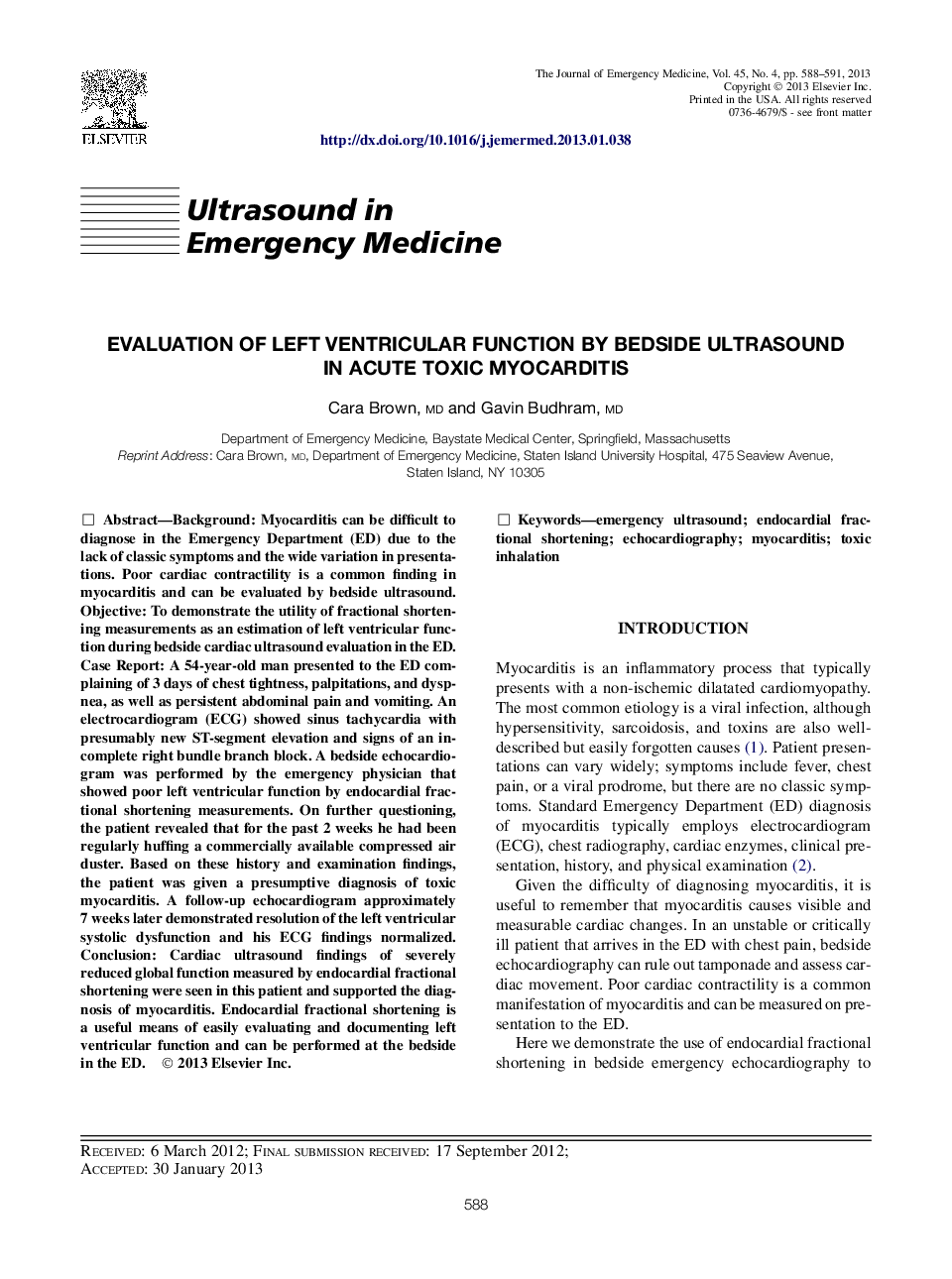| Article ID | Journal | Published Year | Pages | File Type |
|---|---|---|---|---|
| 3247799 | The Journal of Emergency Medicine | 2013 | 4 Pages |
BackgroundMyocarditis can be difficult to diagnose in the Emergency Department (ED) due to the lack of classic symptoms and the wide variation in presentations. Poor cardiac contractility is a common finding in myocarditis and can be evaluated by bedside ultrasound.ObjectiveTo demonstrate the utility of fractional shortening measurements as an estimation of left ventricular function during bedside cardiac ultrasound evaluation in the ED.Case ReportA 54-year-old man presented to the ED complaining of 3 days of chest tightness, palpitations, and dyspnea, as well as persistent abdominal pain and vomiting. An electrocardiogram (ECG) showed sinus tachycardia with presumably new ST-segment elevation and signs of an incomplete right bundle branch block. A bedside echocardiogram was performed by the emergency physician that showed poor left ventricular function by endocardial fractional shortening measurements. On further questioning, the patient revealed that for the past 2 weeks he had been regularly huffing a commercially available compressed air duster. Based on these history and examination findings, the patient was given a presumptive diagnosis of toxic myocarditis. A follow-up echocardiogram approximately 7 weeks later demonstrated resolution of the left ventricular systolic dysfunction and his ECG findings normalized.ConclusionCardiac ultrasound findings of severely reduced global function measured by endocardial fractional shortening were seen in this patient and supported the diagnosis of myocarditis. Endocardial fractional shortening is a useful means of easily evaluating and documenting left ventricular function and can be performed at the bedside in the ED.
